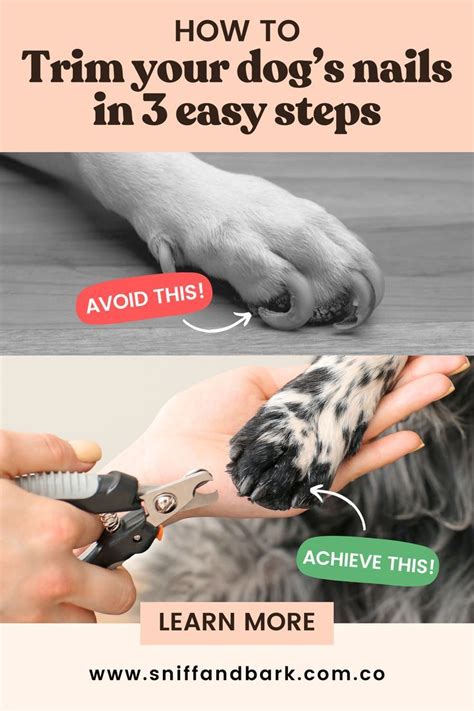Introduction
The health and well-being of our beloved pets extend beyond regular check-ups and vaccinations. Proper paw trimming and nail care play a crucial role in maintaining their mobility, comfort, and overall quality of life. In this comprehensive guide, we will delve into the importance of paw trimming and nail care, explore the best practices for handling these tasks, and discuss the latest advancements and innovations in the field.

Why Paw Trimming and Nail Care Matters
Pain Points
- Overgrown nails: Untrimmed nails can become too long, curving under the paws and pressing into the paw pads. This can cause discomfort, pain, and difficulty walking.
- Split or torn nails: Long nails are more prone to splitting or tearing, causing bleeding, infection, and further pain.
- Mobility issues: Excessive nail growth can restrict movement, making it difficult for pets to walk or run normally.
- Infection: Unkempt nails can accumulate dirt and bacteria, leading to infections that may spread to the paw pads or even the bloodstream.
Benefits
- Improved mobility: Regular trimming helps maintain nails at an optimal length, allowing pets to move comfortably and without pain.
- Reduced risk of injury: Trimmed nails are less likely to split or tear, minimizing the risk of bleeding and infection.
- Enhanced paw pad health: Proper nail length prevents the nails from pressing into the paw pads, promoting circulation and preventing pressure sores.
- Better hygiene: Clean, trimmed nails help prevent the accumulation of dirt and bacteria, reducing the risk of infections.
Current Status and Innovations
Prevalence of Nail Issues
- According to the American Kennel Club, an estimated 50% of dogs have overgrown nails.
- The prevalence of nail problems in cats is less well-documented, but studies indicate that it is also a common issue.
Latest Advancements
- Electric nail trimmers: These devices use a rotating grinding stone to gently trim nails, reducing the risk of pain or discomfort.
- Nail caps: These small, rubbery caps are glued to the tips of nails to protect them from wear and tear.
- Laser nail trimming: A non-invasive technique that uses a laser to seal the cut ends of nails, minimizing bleeding and discomfort.
Best Practices for Paw Trimming and Nail Care
Tools and Equipment
- Nail clippers: Specifically designed for pet nails, available in various sizes and shapes.
- Grinder: An electric device that grinds down nails gradually, creating a smooth finish.
- Styptic powder: A substance used to stop bleeding in case of accidental cuts.
- Cotton balls: For cleaning and applying styptic powder.
Step-by-Step Guide to Paw Trimming
- Restrain your pet: Gently hold your pet in a secure and comfortable position.
- Locate the quick: The quick is the sensitive, blood-filled part of the nail. Identify it by looking for the pink or dark-colored area inside the nail.
- Trim the nails: Using clippers or a grinder, trim the nails just above the quick. Avoid cutting too close to the quick, as this can cause pain and bleeding.
- Smooth the edges: Use a file or grinder to smooth any sharp edges or burrs on the nails.
- Repeat for all paws: Trim all four paws, taking your time to avoid any mistakes or discomfort.
Case Details: Common Nail Problems and Solutions
Overgrown Nails
- Causes: Lack of exercise, underlying health conditions, breed predisposition
- Solutions: Regular trimming, grinding down the nails gradually, using nail caps
Split or Torn Nails
- Causes: Trauma, poor nail health, lack of trimming
- Solutions: Trim the nails above the split or tear, apply styptic powder to stop bleeding, seek veterinary attention if the tear is deep or bleeding persists
Ingrown Nails
- Causes: Overgrown nails that curl under the paw pad
- Solutions: Trim the nails below the quick to allow it to grow out straight, use nail caps to protect the paw pad, seek veterinary attention for severe cases
Motivations for Pet Owners
Benefits for Pets
- Improved mobility and comfort: Trimmed nails allow pets to walk and run with ease without pain or discomfort.
- Reduced risk of injury and infection: Well-maintained nails prevent injuries and infections associated with overgrown or damaged nails.
- Enhanced overall well-being: Healthy paws promote overall well-being and contribute to a better quality of life for pets.
Benefits for Owners
- Increased bond with pet: Regular paw trimming and nail care provide an opportunity to bond with your pet and check for any potential health issues.
- Reduced veterinary expenses: Preventing nail-related injuries and infections can save significant veterinary expenses in the long run.
- Peace of mind: Knowing that your pet’s paws are well-cared for provides peace of mind and a sense of responsibility.
Conclusion
Paw trimming and nail care are essential aspects of pet ownership that contribute significantly to the health, mobility, and well-being of our furry companions. By embracing best practices, utilizing innovative tools, and seeking professional guidance when necessary, we can ensure that our pets enjoy healthy, comfortable paws for years to come. As pet owners, it is our responsibility to prioritize their paw care, not only for their physical health but also for their overall happiness and quality of life.





















